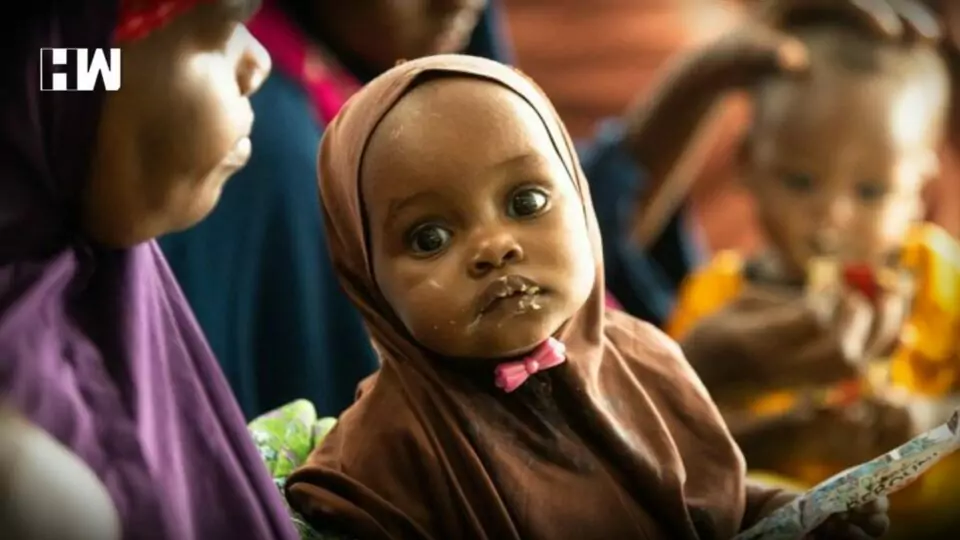Famine is fast approaching in Somalia and more than 700,000 people could face starvation next year, the Food and Agriculture Organization (FAO) warned on Tuesday, citing the latest Integrated Food Security Phase (IPC) analysis.
However, there is still time to meet the needs of rural communities who are among those most at risk, the UN agency said, adding that large-scale investment in resilience and livelihood support is also required to break the hunger cycle.
We can turn the tide of the hunger crisis in Somalia if we protect rural livelihoods AND scale up investments in resilience. But we must act with urgency.
Our @FAO statement on the drought emergency  https://t.co/b4xC0URnif
https://t.co/b4xC0URnif
EPeterschmitt
“Sustained levels of at-scale support will be required well into mid to late 2023, if we are to prevent, not just delay famine,” said Etienne Peterschmitt, FAO Representative in the country.
Millions facing hunger
Somalia has been pushed to the brink of famine due to historic drought triggered by five consecutive failed rainy seasons, spiralling food prices and intensifying conflict.
Nearly two million people are expected to be in IPC 4 emergency conditions between January and March next year, rising to 2.7 million by June.
Up to 727,000 could face catastrophic food insecurity by the middle of the year, meaning starvation and death.
‘Real action’ needed
Mr. Peterschmitt described the situation in Somalia as dire.
Although current levels of humanitarian assistance are helping to prevent what he called “extreme outcomes”, they are not enough to halt the famine threat beyond a few months at a time.
“People are dying in IPC Phase 4. Yet, still there is an unrelenting focus on famine declarations as a trigger for action,” he said.
“Real action needs to be taken not only to help communities meet their immediate needs, but also so they can adapt their livelihoods and build resilience in the face of climate crises and economic shocks, preparing them for whatever the future may bring.”
Protecting livestock herds
The unprecedented drought in the Horn of Africa is the most severe in recent history, according to the UN humanitarian affairs office, OCHA.
Rural farming and pastoralist communities, as well as displaced communities who overwhelmingly come from rural areas, are among those most at risk of famine.
Their survival depends on the survival of their herds, and their ability to grow crops, FAO said, both of which have been hampered by the drought.
“Their children’s nutrition is inextricably linked to the health and productivity of their animals. Unable to produce milk, those animals have been dying at a shocking rate for the last year,” the agency added.
Cost-effective assistance
FAO said it is crucial to save livestock, and keep them fed and healthy, because they are the only source of food and income for many rural communities.
Keeping livestock fed reduced the risk of acute malnutrition by up to 11 per cent among pastoralist families, according to preliminary findings from an upcoming study in the Horn of Africa.
Furthermore, providing this assistance is relatively cheap, costing an average of around 40 cents per goat, compared with $40 to replace the animal.
Reaching vulnerable communities
Rural livelihoods assistance saves lives, said FAO. This support helps people to remain in their homes when it is safe for them to do so and paves the way for future recovery.
The current lack of large-scale funding for this support, and for climate resilient food production and development priorities, poses great challenges, making communities vulnerable to climate and economic shocks.
Over the past eight months, FAO reached more than 700,000 people in 35 districts with cash through its Famine Prevention Scale-Up Plan.
More than 40,000 persons received seeds, animal feed, fertilizers and other agricultural inputs during this period,11 million animals were treated, and 27 million litres of water were transported to remote areas.
Over $24 million in cash, alongside livelihoods assistance, has been provided to rural communities who are most exposed to famine.
FAO plans to reach over a million more people in the coming months but will need additional funds for its operations, including to assist communities in hard-to-reach and inaccessible rural areas.
As an independent media platform, we do not take advertisements from governments and corporate houses. It is you, our readers, who have supported us on our journey to do honest and unbiased journalism. Please contribute, so that we can continue to do the same in future.

